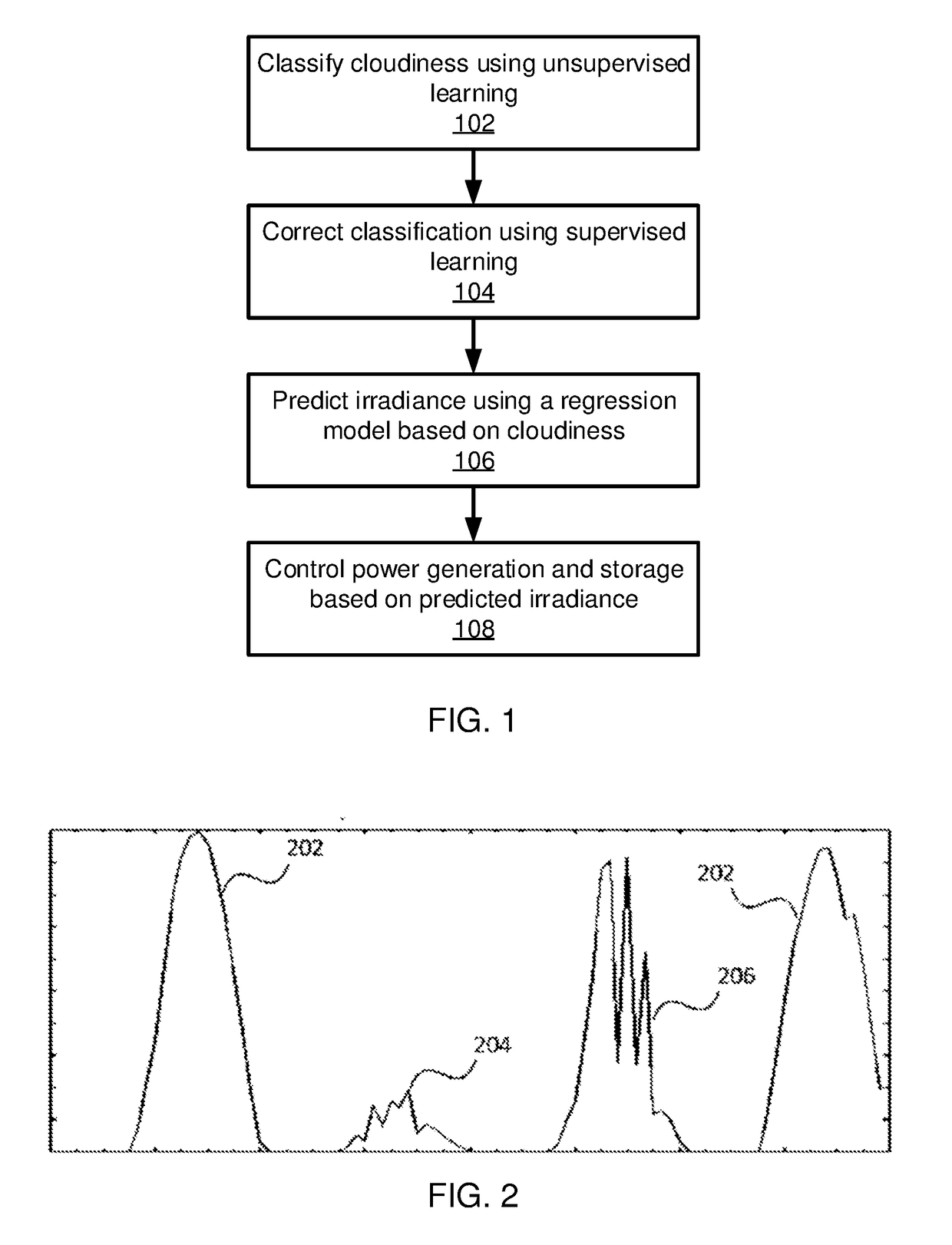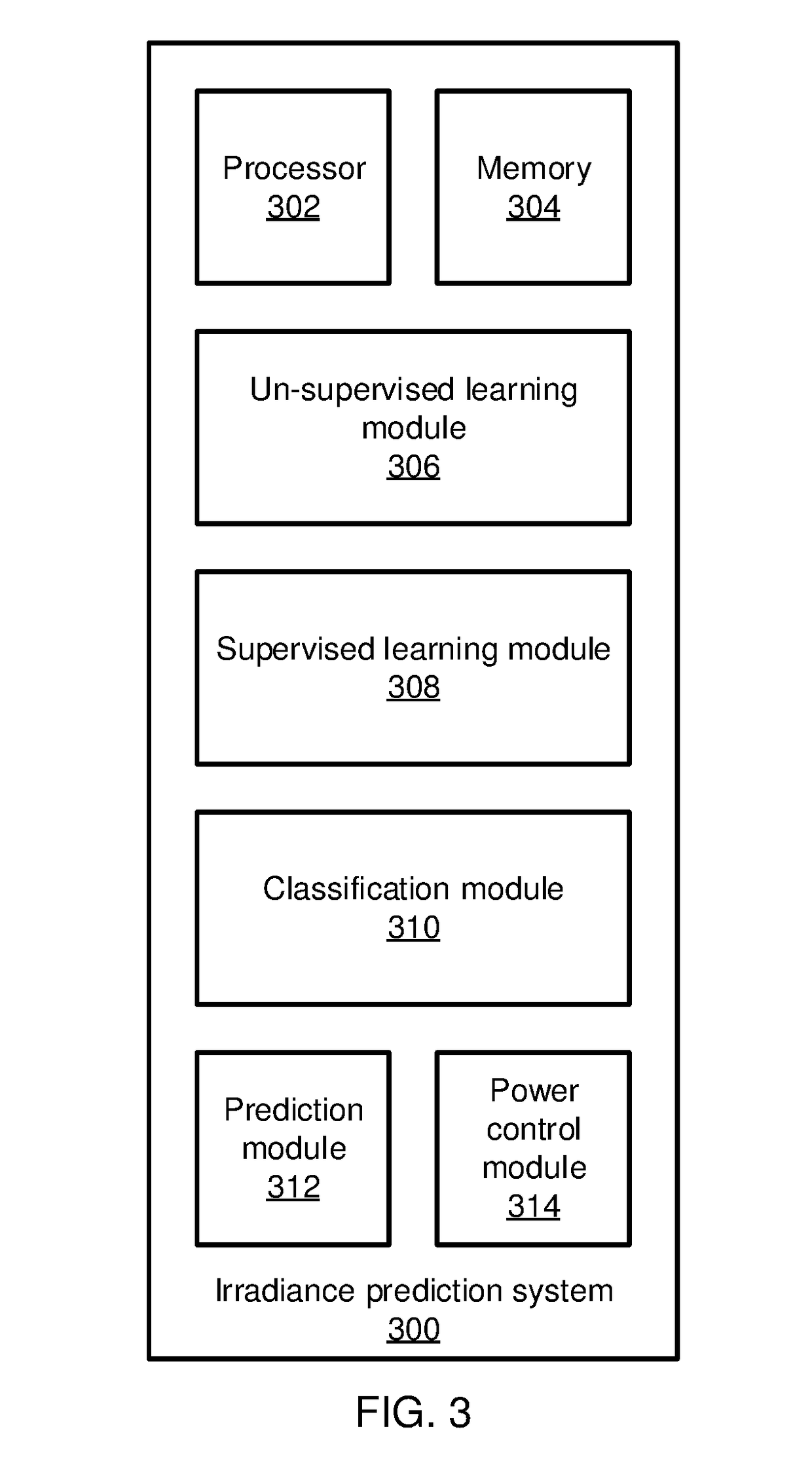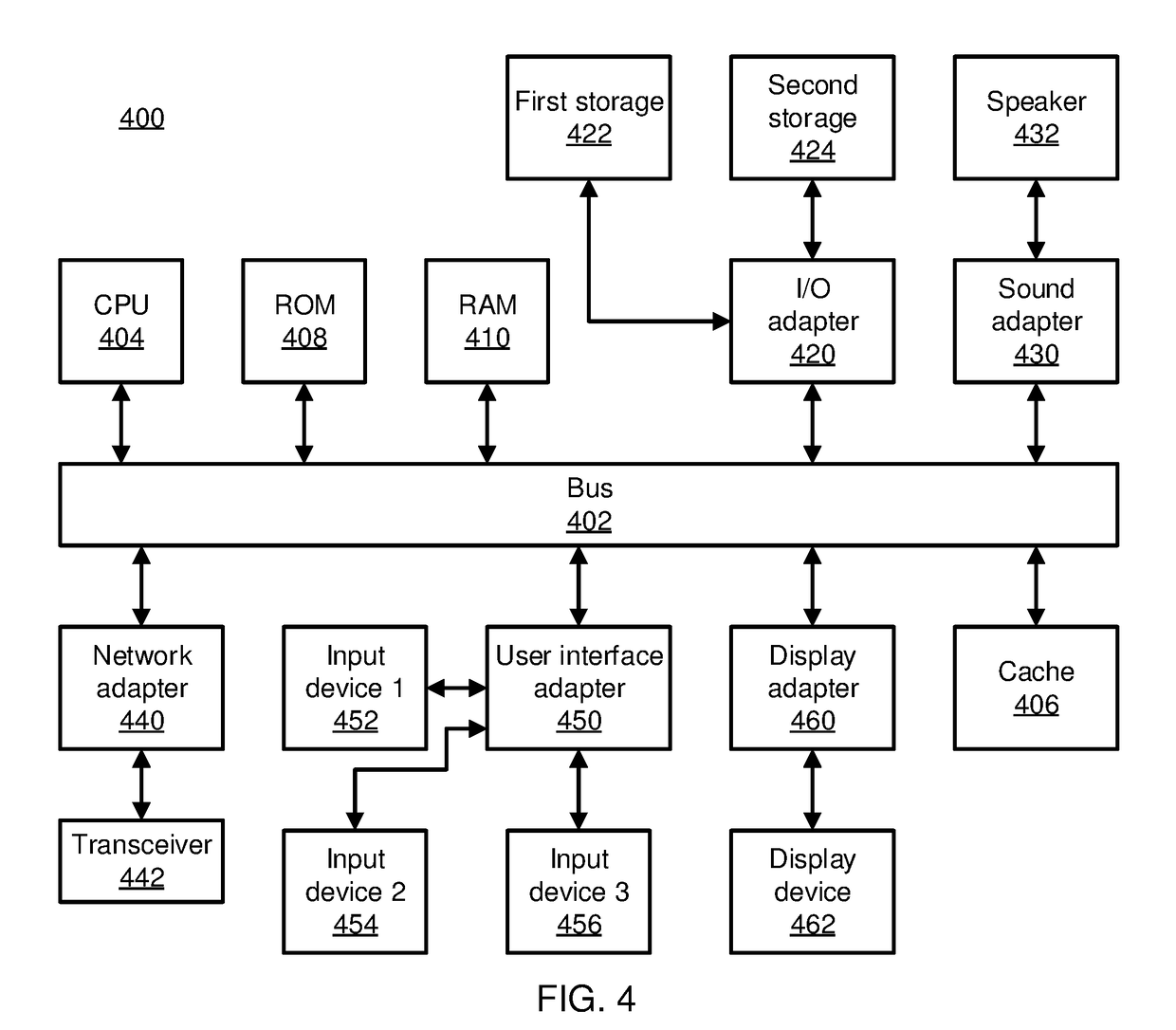Solar forecasting using machine learned cloudiness classification
- Summary
- Abstract
- Description
- Claims
- Application Information
AI Technical Summary
Benefits of technology
Problems solved by technology
Method used
Image
Examples
Embodiment Construction
[0014]Embodiments of the present invention provide classification of sky cloudiness using supervised machine learning. This information can, in turn, be used to perform a regression on the weather information for a given day to provide a prediction of the solar output for that day. The classification of a day's cloudiness is used to determine a type of regression to perform so that an accurate prediction can be generated.
[0015]As a baseline, clear sky total irradiance at the surface of the Earth closely follows the irradiance at the top of the atmosphere of about 1362 W / m2, but is attenuated by the absorption and scattering by gas molecules and aerosol particles in the atmosphere. Clear sky irradiance can be accurately calculated based on the zenith and azimuth angles of the sun, climatological atmospheric conditions, and aerosol particle density. During times of clear skies, the irradiance measured at the Earth's surface does not change significantly as gas molecules and particles ...
PUM
 Login to View More
Login to View More Abstract
Description
Claims
Application Information
 Login to View More
Login to View More - R&D
- Intellectual Property
- Life Sciences
- Materials
- Tech Scout
- Unparalleled Data Quality
- Higher Quality Content
- 60% Fewer Hallucinations
Browse by: Latest US Patents, China's latest patents, Technical Efficacy Thesaurus, Application Domain, Technology Topic, Popular Technical Reports.
© 2025 PatSnap. All rights reserved.Legal|Privacy policy|Modern Slavery Act Transparency Statement|Sitemap|About US| Contact US: help@patsnap.com



